The post Copper appeared first on Antique Butterflies.
]]>Copper Butterflies. Copper is one of the few metals that can occur in nature in a directly usable metallic form (native metals). This led to very early human use in several regions, from c. 8000 BC. Thousands of years later, it was the first metal to be smelted from sulfide ores, c. 5000 BC, the first metal to be cast into a shape in a mold, c. 4000 BC and the first metal to be purposefully alloyed with another metal, tin, to create bronze, c. 3500 BC. Reference: Wikipedia
Below are some examples of antique copper objects decorated, or in the form of, butterflies including a Tiffany & Co silver mounted copper vase and an enamel and copper chestnut box.
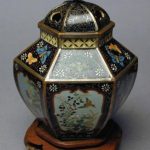
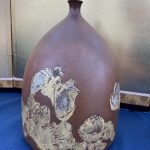
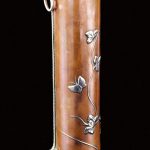
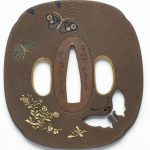
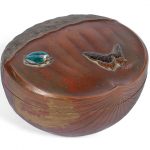
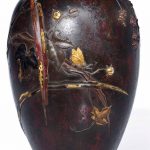
The post Copper appeared first on Antique Butterflies.
]]>The post Child & Child appeared first on Antique Butterflies.
]]>Child & Child was a London based jewellery, gold and silversmith firm operating from 1880-1916. Established by brothers Walter (1840-1930) and Harold (1848-1915), Child & Child became well known for its Art Nouveau jewellery and attracted the Royal patronage of Queen Victoria and Kind Edward VII, amongst others. In 1899 the partnership ended, however Harold Child continued trading under the same name until his death in 1915. The original location for the business was in Seville Street, Knightsbridge, London, but from 1891 until 1916 the company was located at 35 Alfred Place, Kensington, London. Reference: Museum of Applied Art and Sciences
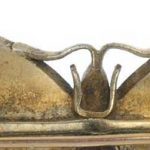
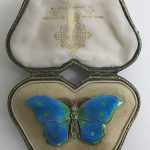
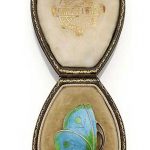
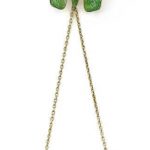
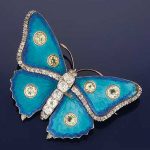

The post Child & Child appeared first on Antique Butterflies.
]]>The post Chinese Cloisonne appeared first on Antique Butterflies.
]]>Chinese Cloisonne Butterflies. Cloisonne reached China in the 13–14th centuries; the first written reference is in a book of 1388, where it is called “Dashi ware”. No Chinese pieces clearly from the 14th century are known, the earliest datable pieces being from the reign of the Xuande Emperor (1425–35), which however show a full use of Chinese styles suggesting considerable experience in the technique. It was initially regarded with suspicion by Chinese connoisseurs, firstly as being foreign, and secondly as appealing to feminine taste. However, by the beginning of the 18th century the Kangxi Emperor had a cloisonné workshop among the many Imperial factories. The most elaborate and highly valued Chinese pieces are from the early Ming Dynasty, especially the reigns of the Xuande Emperor and Jingtai Emperor (1450–57), although 19th century or modern pieces are far more common. The Chinese industry seems to have benefited from a number of skilled Byzantine refugees fleeing the Fall of Constantinople in 1453, although based on the name alone, it is far more likely China obtained knowledge of the technique from the middle east. In much Chinese cloisonné blue is usually the predominant colour, and the Chinese name for the technique, jingtailan (“Jingtai blue ware”), refers to this, and the Jingtai Emperor. Quality began to decline in the 19th century. Initially heavy bronze or brass bodies were used, and the wires soldered, but later much lighter copper vessels were used, and the wire glued on before firing. The enamels compositions and the pigments change with time. Reference: Wikipedia
Below are some examples of Chinese cloisonne objects with butterflies in their design.
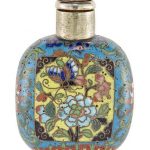
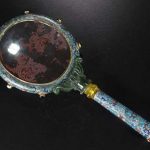
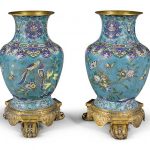
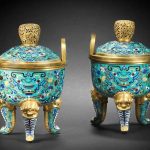
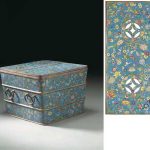
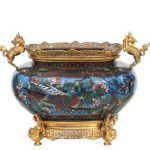
The post Chinese Cloisonne appeared first on Antique Butterflies.
]]>The post Gold appeared first on Antique Butterflies.
]]>Gold Butterflies. Gold is a chemical element with the symbol Au and atomic number 79, making it one of the higher atomic number elements that occur naturally. In its purest form, it is a bright, slightly reddish yellow, dense, soft, malleable, and ductile metal. Chemically, gold is a transition metal and a group 11 element. Reference: Wikipedia
The first firm evidence of human interaction with gold occurred in ancient Egypt around 3,000 B.C. Gold played an important role in ancient Egyptian mythology and was prized by pharaohs and temple priests. It was so important, in fact, that the capstones on the Pyramids of Giza were made from solid gold. Reference: BeBusinessed
Below are some examples of gold objects with butterflies in their design including a Roman gold butterfly necklace.
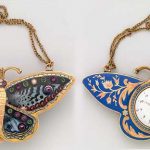
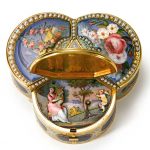
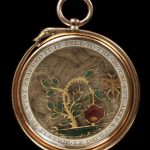
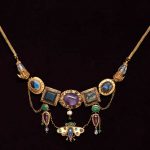
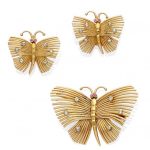
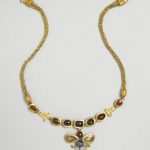
The post Gold appeared first on Antique Butterflies.
]]>The post Ormolu appeared first on Antique Butterflies.
]]>Ormolu is an English term, used since the 18th century for the gilding technique of applying finely ground, high-carat gold–mercury amalgam to an object of bronze, and for objects finished in this way.
The mercury is driven off in a kiln leaving behind a gold coating. The French refer to this technique as “bronze doré”. In English, it is known as “gilt bronze”.
The manufacture of true ormolu employs a process known as mercury-gilding or fire-gilding, in which a solution of mercuric nitrate is applied to a piece of copper, brass, or bronze; followed by the application of an amalgam of gold and mercury. The item is then exposed to extreme heat until the mercury vaporizes and the gold remains, adhering to the metal object.
This process has generally been supplanted by the electroplating of gold over a nickel substrate, which is more economical and less dangerous. Reference: Wikipedia
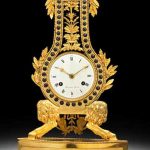
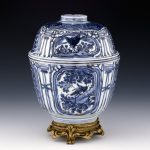
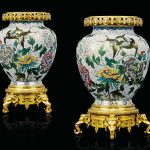
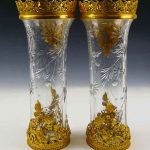
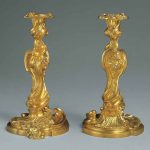
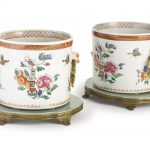
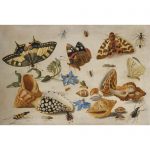
The post Ormolu appeared first on Antique Butterflies.
]]>The post Japanese Cloisonne Butterflies appeared first on Antique Butterflies.
]]>Japanese cloisonne. Cloisonné enamels in Japan had traditionally been used only as small areas of decoration on architecture and on sword fittings. Around 1833 a former samurai, Kaji Tsunekichi of Nagoya in Owari Province (modern Aichi Prefecture), like many other samurai of that time, was forced to find ways to supplement his meagre official income. It is believed that Kaji obtained a piece of Chinese cloisonné enamel and took it apart, examined how it was made and eventually produced a small cloisonné enamel dish.
By the late 1850s he had taken on pupils and was appointed official maker to the regional warlord of Owari province. There was a huge increase in the production of cloisonné enamel ware following the ‘reopening’ of Japan in the 1850s and the ensuing obsession in the West for all forms of Japanese art. Reference: The Victoria and Albert Museum
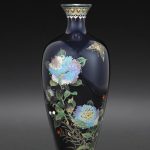
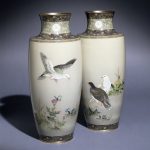
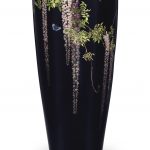
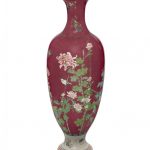
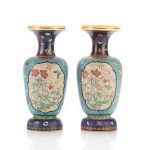
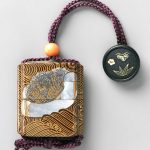
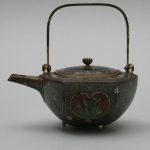
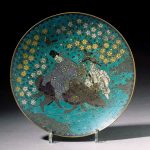
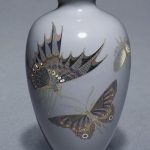
The post Japanese Cloisonne Butterflies appeared first on Antique Butterflies.
]]>The post Cloisonne Butterflies appeared first on Antique Butterflies.
]]>Cloisonne butterflies. Cloisonné is an ancient technique for decorating metalwork objects. In recent centuries, vitreous enamel has been used, and inlays of cut gemstones, glass and other materials were also used during older periods. The resulting objects can also be called cloisonné. The decoration is formed by first adding compartments to the metal object by soldering or affixing silver or gold wires or thin strips placed on their edges. These remain visible in the finished piece, separating the different compartments of the enamel or inlays, which are often of several colors. Cloisonné enamel objects are worked on with enamel powder made into a paste, which then needs to be fired in a kiln. Reference: Wikipedia
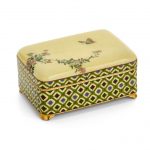
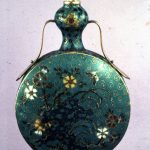
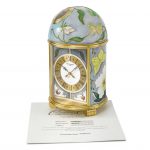
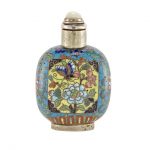
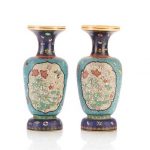
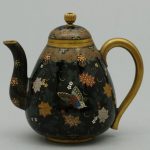
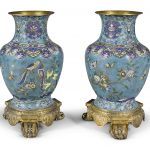
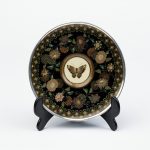
The post Cloisonne Butterflies appeared first on Antique Butterflies.
]]>